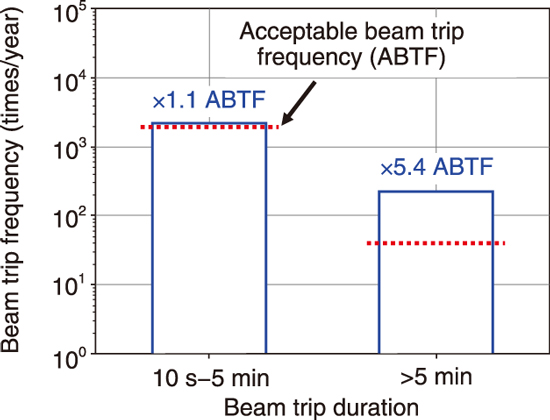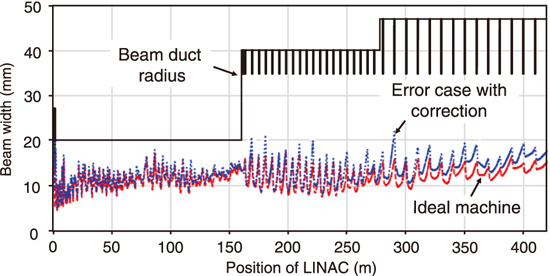
Fig.4-12 Beam trip frequency for the accelerator-driven system (ADS)

Fig.4-13 Layout of the JAEA-ADS LINAC

Fig.4-14 Maximum horizontal beam width
The Japan Atomic Energy Agency (JAEA) is developing an accelerator-driven system (ADS) for nuclear transmutation to deal with the problem of high-level radioactive waste disposal. The JAEA-ADS uses a 30-MW superconducting proton linear accelerator (LINAC) to produce spallation neutrons for a subcritical reactor. Stringent reliability is required for ADS accelerators to maintain the frequency of beam trips below a specific level, thus reducing the thermal fatigue in the subcritical reactor structures. Fig.4-12 compares the beam trip frequency of the J-PARC LINAC against the acceptable beam trip frequency (ABTF) for the JAEA-ADS LINAC. The major challenge is to reduce the frequency of beam trips longer than 5 min. The beam trip frequency for 10 s to 5 min is close to the ABTF. Therefore, JAEA-ADS LINAC adopted a reliability-oriented design to operate below the ABTF. As the first step, a robust design was explored for the JAEA-ADS LINAC to reduce the beam trip frequency caused by beam loss in the superconducting accelerator, which causes long beam stops. The robust design allows stable beam operation with an acceptable beam loss.
The JAEA-ADS LINAC accelerates a 20 mA proton beam to a final energy of 1.5 GeV by using normal conducting and superconducting radiofrequency cavities, as shown in Fig.4-13. We implemented the most recent advances in superconducting radiofrequency cavities to achieve high acceleration efficiency. Because the JAEA-ADS LINAC runs at a higher current than the other ADS projects, the beam particles are subject to significant Coulomb repulsion forces that can induce unacceptable transverse beam size growth, causing considerable beam degradation and losses. Therefore, we set the parameters of all the elements in the LINAC to achieve a proper balance between the external fields applied by the elements and the internal ones due to the particles. Thus, we achieved efficient beam control.
We optimized the LINAC using simulations with a large number of protons (1 × 108) to run with beam losses two orders lower than the limit of hands-on maintenance for an ideal machine (without errors) and for feasible error scenarios. Fig.4-14 shows a comparison of the maximum horizontal beam widths obtained from simulation with 1000 different combinations of random misalignments and power supply jitters with a correction scheme against the ideal machine case. We found that the JAEA-ADS LINAC achieves proper control of the beam width and beam losses for realistic beam operations. Thus, we achieved a robust LINAC design that represents a step towards developing a reliability-oriented accelerator for the JAEA-ADS.
(Bruce Yee-Rendon)
* Kondo, Y., Yee-Rendon, B. et al., Research and Developments of a Superconducting Linac for ADS, Journal of Plasma and Fusion Research, vol.98, no.5, 2022, p.222-226 (in Japanese).